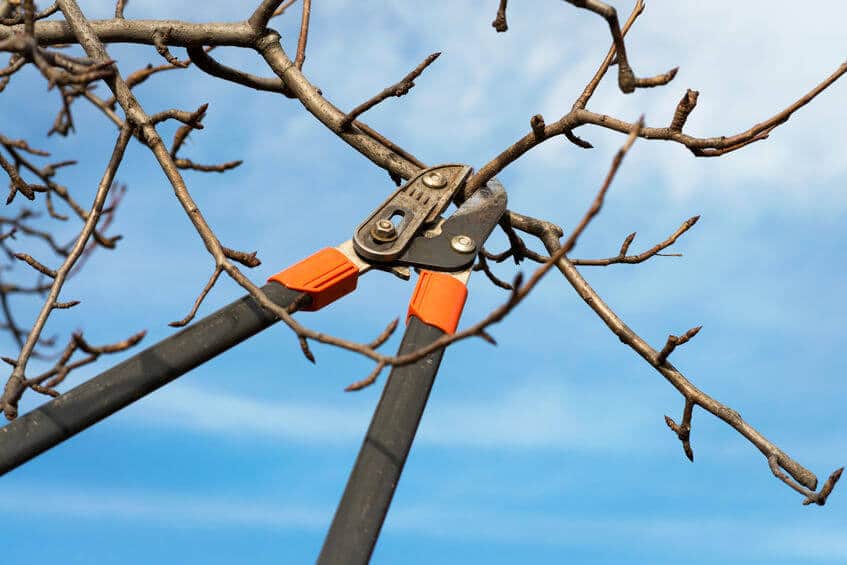If your lawn has started to look thin, patchy, or faded, overseeding can be a highly effective way to rejuvenate it. Overseeding involves planting new grass seeds to fill in the gaps and improve your lawn's overall health and appearance. However, before you dive into this project, it's essential to understand the basics. In this article, you'll find answers to your most pressing questions about overseeding.
Overseeding a Lawn: Frequently Asked Questions, Answered
How Do I Know If My Lawn Needs Overseeding?
 Many homeowners may wonder whether their lawns truly need overseeding. Several telltale signs indicate this process could be beneficial, including:
Many homeowners may wonder whether their lawns truly need overseeding. Several telltale signs indicate this process could be beneficial, including:
- Thinning Grass: If your once-lush lawn now displays sparse patches or appears thinner throughout, overseeding can help restore its former glory.
- Frequent Weeds: A thinning lawn gives weeds more room to proliferate. Overseeding helps to crowd out these unwanted plants.
- Increased Soil Compaction: Compacted soil reduces the space for grass roots to grow, which can lead to thinning grass. Overseeding after core aeration can alleviate this issue.
- Insect Damage: If your lawn has insect damage, overseeding after pest control can help it recover.
When Is the Ideal Time to Overseed My Lawn?
It depends on the type of grass you have. Overseeding cool-season grasses such as bluegrass, fescue, and ryegrass is best done from late summer to early fall.
Should I Aerate and Dethatch Before Overseeding?
Both lawn aeration and dethatching are essential steps to take before overseeding. When done together or consecutively, they can offer numerous benefits, including the following:
- Improved Seed-to-Soil Contact: Eliminating thatch clears the way for new grass seeds, while aeration opens up space for roots to grow.
- Enhanced Nutrient Uptake: Exposing soil and removing thatch allow water, air, and critical nutrients to reach grass roots more effectively.
- Healthier Root Systems: Aeration and dethatching help prevent soil compaction and reduce resource competition, leading to stronger root systems.
How Low to Cut Grass Before Overseeding?
Cutting your grass to the correct height before overseeding is crucial for ensuring proper seed-to-soil contact and encouraging healthy germination. Mowing the lawn too high may prevent the seeds from reaching the soil, while mowing too short can stress existing grass and increase the risk of soil compaction.
Generally, if your lawn is planted with cool-season grasses, it’s best to mow it to a height of 1.5 to 2 inches before overseeding.
What Tools Do I Need to Overseed My Lawn?
-
Grass Seed: Choose a blend that matches or complements the existing grass variety in your lawn.
-
Seed Spreader: A spreader ensures even seed distribution across your lawn.
-
Lawn Aerator: This tool makes tiny holes in the soil, which allows water, air, and nutrients to reach the grass roots more easily.
-
Dethatcher: This device removes accumulated thatch from the lawn.
-
Rake and Shovel: These yard tools help cultivate and smooth the soil surface before seeding.
How Much Grass Seed Do I Need for Overseeding?
 The amount of grass seed you need depends on the size of your lawn and the type of grass you plan to use. To measure your lawn, multiply the length and width of your lawn in feet together. This will give you the square footage.
The amount of grass seed you need depends on the size of your lawn and the type of grass you plan to use. To measure your lawn, multiply the length and width of your lawn in feet together. This will give you the square footage.
Next, decide on a seed type. Different types of grass require different amounts of seed for overseeding. Research your grass seed to determine the overseeding rate per square foot.
Once you've determined your lawn's size and found your grass seed's overseeding rate, multiply the two numbers. This calculation will give you the total amount of seed required in pounds or ounces. For example, if you have a 1,000-square-foot lawn and the recommended overseeding rate is 5 pounds of seed per 1,000 square feet, you'll need 5 pounds of seed to overseed your lawn.
Should I Mix Grass Seed With Topsoil When Overseeding?
The answer depends on the condition of your existing lawn and what you plan to achieve, whether it’s to improve seed-to-soil contact or make up for nutrient deficiencies in poor soil.
Generally, the preferred method for most overseeding projects, especially for existing lawns with healthy soil, is to seed directly on prepared (dethatched and aerated) soil. Meanwhile, mixing seeds with topsoil can be beneficial in some situations, such as if the lawn has uneven or compacted soil where seeds might struggle to make good contact for germination.
However, mixing seeds with topsoil can be risky. You might end up burying the seeds too deeply or spreading them unevenly, resulting in a patchy lawn. If you’re unsure whether to mix grass seed with topsoil when overseeding, it’s best to consult a trusted lawn care company like Senske for professional advice.
Effortlessly Achieve a Lush, Healthy Lawn With the Help of Senske
Overseeding and the myriad tasks involved in keeping a lawn healthy and green are time-consuming and labor-intensive. It requires experience and specialized knowledge to ensure grass stays vibrant throughout the seasons and is resilient against pests, foot traffic, and disease.
For expert assistance keeping your lawn in top condition, turn to Senske. Since 1947, we’ve provided exceptional lawn and tree care solutions to residential and commercial customers throughout Colorado, Idaho, Utah, and Washington. You can trust our team to cultivate and maintain a beautiful, thriving lawn you can be proud of.
Contact us today for a free estimate!










